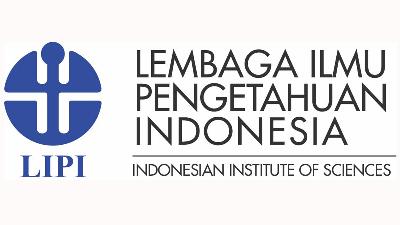The Role of Empowerment and Work Environment on Employee Performance Supported Over Organizational Commitment
Abstract
Keywords
Full Text:
PDFReferences
Abdullah, A., & Ramay, I. (2012). Antecedents of organizational commitment of banking sector employees in Pakistan. Serbian Journal of Management, 7(1), 89–102. https://doi.org/10.5937/sjm1201089a
Ahmad, I., & Manzoor, S. R. (2017). Effect of Teamwork, Employee Empowerment and Training on Employee Performance. International Journal of Academic Research in Business and Social Sciences, 7(11), 380–394. https://doi.org/10.6007/ijarbss/v7-i11/3472
Ali, A., & Ali, Z. (2017). the Agricultural Manufacturing Sector in Khyber Pakhtunkhwa Province , Pakistan. 95(Iceemr), 32–39.
Andjarwati, T., Setiono, B. A., Susilo, K. E., Budiarti, E., Sustiyatik, E., Audah, A. K., & Winarno, A. F. (2019). The Effect Of Osha, Work Environment And Work Discipline On Employee Satisfaction And Employee Performance. Archives of Business Research (ABR), 7(11).
Badrianto, Y., & Ekhsan, M. (2019). The Effect of Work Environment and Motivation on Employee Performance of PT. Hasta Multi Sejahtera Cikarang. Journal of Research in Business, Economics, and Education, 1(1).
Bose, I., & Emirates, U. A. (2018). Employee Empowerment and Employee Performance: An Empirical Study on Selected Banks in UAE. Journal of Applied Management and Investments, 7(2), 71–82.
Chin, W. (1998). The Partial Least Squares Approach to Structural Equation Modeling. Modern Methods for Business Research, 8.
Esmaeilian, B., Behdad, S., & Wang, B. (2016). The evolution and future of manufacturing: A review. Journal of Manufacturing Systems, 39, 79–100. https://doi.org/10.1016/j.jmsy.2016.03.001
Giffords, E. D. (2009). An examination of organizational commitment and professional commitment and the relationship to work environment, demographic and organizational factors. Journal of Social Work, 9(4), 386–404. https://doi.org/10.1177/1468017309346232
Hafiz, A. (2017). Relationship between Organizational Commitment and Employee’s Performance Evidence from Banking Sector of Lahore. Journal of Business and Management Review, 7(2), 2–7. https://doi.org/10.4172/2223-5833.1000304
Haggins, R. (2011). a Correlational Study of Work Environment Factors and Organizational Commitment in Southern California Staff Nurses. August.
Hair, J. F. (1995). Multivariate Data Analysis With Reading (Fourth). New Jersey.
Haryono, Siswoyo, dan Wardoyo, Parwoto. (2012).Structural Equation Modelling Untuk Penelitian Manajemen Menggunakan Amos 18. Jawa Barat : PT Intermedia Personalia Utama
Hanaysha, J. (2016). Testing the Effects of Employee Engagement, Work Environment, and Organizational Learning on Organizational Commitment. Procedia - Social and Behavioral Sciences, 229, 289–297. https://doi.org/10.1016/j.sbspro.2016.07.139
Igbaria, M., Zinatelli, N., Cragg, P., & Cavaye, A. L. (1997). Personal computing acceptance factors in small firms: a structural equation model. MIS quarterly, 279-305.
Jayaweera, T. (2015). Impact of Work Environmental Factors on Job Performance, Mediating Role of Work Motivation: A Study of Hotel Sector in England. International Journal of Business and Management, 10(3), 271–278. https://doi.org/10.5539/ijbm.v10n3p271
Karim, F., & Sciences, A. (2012). Impact of Job Satisfaction, Perceived Organizational Justice and Employee Empowerment on Organizational Commitment in SemiGovernment Organizations of Pakistan. 3(4), 92–104. http://jbsq.org/wp-content/uploads/2012/06/JBSQ_June2012_7.pdf
Khuong, M. N., & Vu, P. Le. (2014). Measuring the Effects of Drivers Organizational Commitment through the Mediation of Job Satisfaction A Study in Ho Chi Minh City , Vietnam. 2(2), 1–16.
Marzec, I. (2014). Using Employee Empowerment To Encourage Organizational Commitment in the Public Sector. Journal of Positive Management, 5(2), 43.
Meyerson, G., & Dewettinck, B. (2012). Effect of Empowerment on Employees Performance Abstract : Advanced Research in Economic and Management Sciences, 2(July), 40–46.
Razak, N. A., Ma’amor, H., & Hassan, N. (2016). Measuring Reliability and Validity Instruments of Work Environment Towards Quality Work Life. Procedia Economics and Finance, 37(16), 520–528. https://doi.org/10.1016/s2212-5671(16)30160-5
Setiawan, R. C., Susanti, E., & Syah, T. Y. R. (2019). The Effect of Organizational Culture on Technology Transfers and Company Performance. Journal of Multidisciplinary Academic, 3(3), 32-37.
Tsui, A. S., Pearce, J. L., & Angela M. Tripoli. (1997). Employee-Organization Relationship : Does Investment In Employees Pay Off ? Academy of Management Journal, 40(5), 1089–1122.
Ugboro, I. O., & Obeng, K. (2000). Top management leadership, employee empowerment, job satisfaction, and customer satisfaction in TQM organizations: an empirical study. Journal of Quality Management, 5(2), 247–272. https://doi.org/10.1016/s1084-8568(01)00023-2
Vanaki, Z., & Vagharseyyedin, S. A. (2009). Organizational commitment, work environment conditions, and life satisfaction among Iranian nurses. Nursing and Health Sciences, 11(4), 404–409. https://doi.org/10.1111/j.1442-2018.2009.00473.x
Vanhala, M., Heilmann, P., & Salminen, H. (2016). Organizational trust dimensions as antecedents of organizational commitment. Knowledge and Process Management, 23(1), 46-61.
Vipraprastha, T., Sudja, I. N., & Yuesti, A. (2018). The Effect of Transformational Leadership and Organizational Commitment to Employee Performance with Citizenship Organization (OCB) Behavior as Intervening Variables (At PT Sarana Arga Gemeh Amerta in Denpasar City). International Journal of Contemporary Research and Review, 9(02), 20503-20518.
Widodo, D. S. (2014). Influence of Leadership And Work Environment To Job Satisfaction And Impact To Employee Performance (Study On Industrial Manufacture In West Java). Journal of Economics and Sustainable Development, 5(26), 62–66.
Refbacks
- There are currently no refbacks.

This work is licensed under a Creative Commons Attribution 3.0 License.
Supported by :


 Indexed by :
Indexed by :




